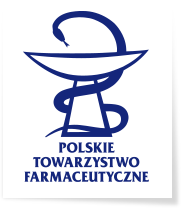Julia Kopeć, Weronika Piątek, Maciej Tadeusz Gawlik
Trichothecenes – still a valid toxicological problem of modern civilization
2025-03-20
The text discusses the toxic effects of fungi of the Fusarium genus, which produce mycotoxins, including trichothecenes (TCT). These toxins are dangerous to humans and animals, causing diseases of the digestive, respiratory, nervous, and immune systems. TCTs are divided into four types (A, B, C, and D) and have a diverse chemical structure. They occur mainly in cereals, and their action is associated with molecular cellular damage and disruption of protein synthesis. The aim of the work was to update and systematize knowledge about toxic hazards resulting from exposure to TCT based on the literature. The mechanisms of toxicity of these compounds and their effect on various systems of the human body were described. The spectrum of toxic effects includes hepatotoxic, neurotoxic, immunotoxic, genotoxic, and harmful effects on the skin. The most common sources of exposure are consumed food products, especially cereal products, but also commonly consumed alcoholic beverages, such as beer. The occurrence of exposure is caused by the lack of proper hygiene during the production and storage of agricultural products, as well as unfavorable climatic conditions, including high humidity and the lack of dry periods in the weather. Although the current literature does not contain a large number of descriptions of TCT poisoning in recent years, it should be noted that in many cases of confirmed exposure cited in the work, the permissible limits of daily TCT intake were exceeded. Additionally, the work discusses the basic analytical methods used in TCT determinations, including dynamically developed, promising methods based on biosensors. In summary, the authors emphasized the need for further research in order to better understand the impact of these toxins on the human body and to introduce effective methods to reduce their presence in the environment. It seems very likely that in the case of a latent source of exposure, identifying the cause of health problems may often be wrongly attributed to other sources. This is particularly important in instances of exposure to TCT, as such exposure causes non-specific and systemic effects.
Keywords: mycotoxins, trichothecenes, contamination of cereal products, Fussarium spp., toxicity, toxicity assessment, mechanisms of toxic action.
© Farm Pol, 2024, 80(10): 687–695
Trichothecenes – still a valid toxicological problem of modern civilization

